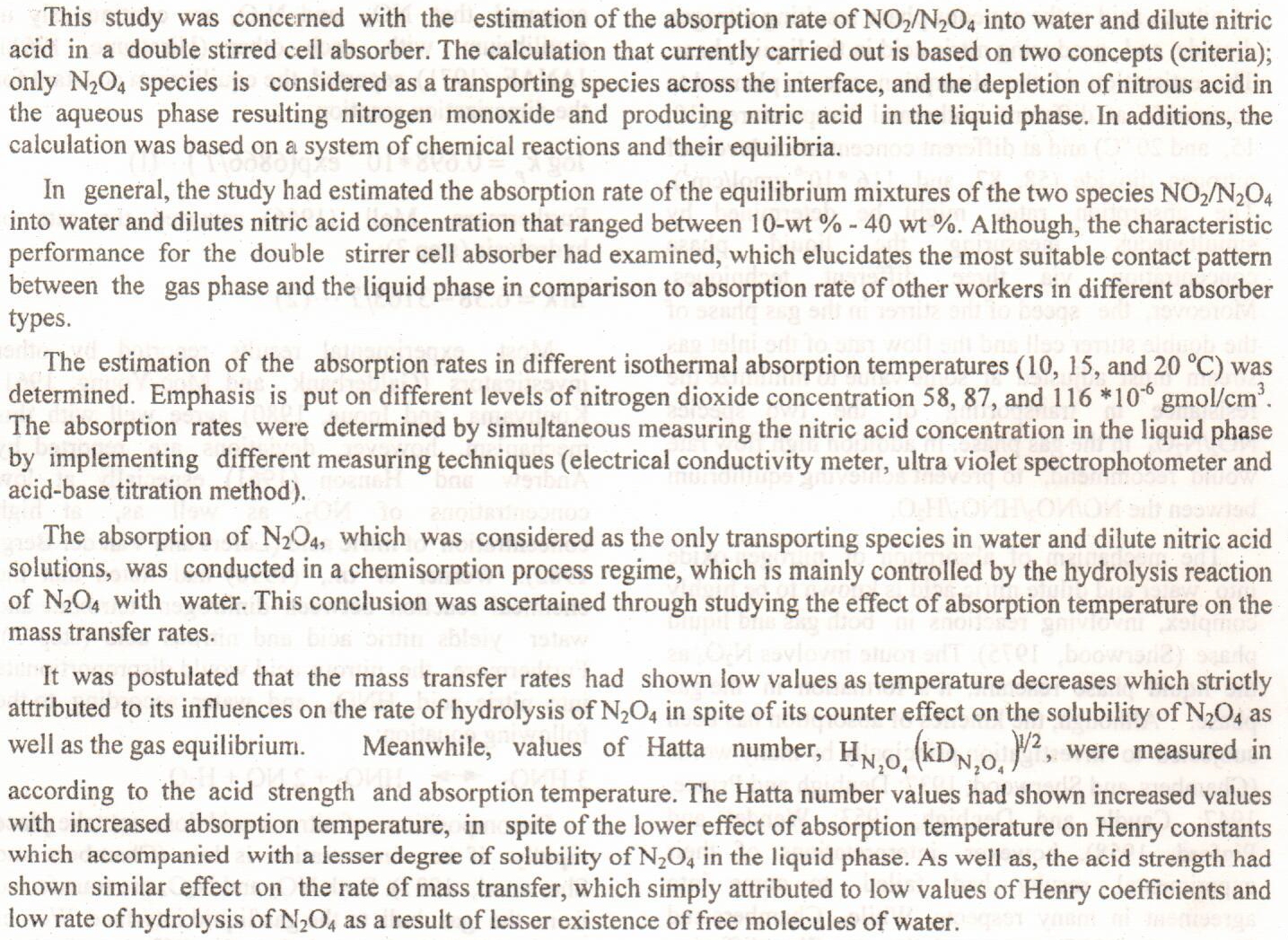
The aim of this paper is to identify Nano-particles that have been used in diagnosis and treatment of leishmaniasis in Iraq. All experiments conducted in this field were based on the following nanoparticles: gold nanoparticles, silver nanoparticles, zinc nanoparticles, and sodium chloride nanoparticles. Most of these experiments were reviewed in terms of differences in the concentrations of nanoparticles and the method that was used in the experiments whether it was in vivo or in vitro. These particles used in most experiments succeeded in inhibiting the growth of Leishmania parasites.
The variety of clean energy sources has risen, involving many resources, although their fundamental principles remain consistent in terms of energy generation and pollution reduction. The using of hydropower system for energy production also has a dynamic impact in which it utilizes to harness the water for the purpose of energy production. As it is important to overcome the problem of accidents in the highway and rural areas in the case of server rainfall and flood by implementation a smart system that used for energy production. This paper aims to develop a controlled hydropower system installed in the drainage sinks allocated in highway roads used for producing. The proposed system consists of storage unit represented by pipes used for t
... Show More (1)
(1)
 (1)
(1)
Optimum allocation of water for restoration of Iraqi marshes is essential for different related authorities. Abo-Ziriq marsh area about 120 km2 is situated 40 km east of Al-Nassryia city. After comparing the measured annual water qualities with the Iraqi standards for surface water quality evaluation, Abo-Ziriq marsh water quality was in acceptable limit. Hydro balance computation were done for each month by using interface among the HEC-RAS, HEC-GeoRAS and ArcView GIS software and built a number of eco-hydro relationships to simulate the marsh ecosystem by using HEC-EFM program to estimate water allocation adequate for ecosystem requirement and constructs a GIS hydraulic reference map to show inundation area, depth grid and velocity dis
... Show More (2)
(2)
Hard water does not pose a threat to human health but may cause precipitation of soap or results stone in the boilers. These reactions are caused by the high concentrations of Ca and Mg. In the industry they are undesirable because of higher fuel consumption for industrial use .Electromagnetic polarization water treatment is a method which can be used for increasing the precipitation of Ca 2+ and CO3 2- ions in hard water to form CaCO3 which leads to decrease the water hardness is research has been conducted by changing the number of coil turns and voltage of the system. The spectroscopy electron microscope was used for imaging the produced crystals. Results of the investigation indicated that
... Show More (3)
(3)
 (2)
(2)
The present work aims to study the possibility of utilization a forward osmosis desalination process as an alternative method to extract water from brine solution rejected from reverse osmosis process.
Experiments conducted in a laboratory–scale forward osmosis (FO) unit in cross flow flat sheet membrane cell yielded water flux ranging from (0.0315 to 0.56 L/m2 .min) when using CTA membrane,and ranging from (0.419 to 2.785 L/m2 .min) for PA membrane under 0.4 bar. Two possible membrane orientations were tested. Sodium chloride with high concentrations was used as draw solution solute. The effect of membrane orientation on internal concentration polarization (ICP) was studied. Two regimes of ICP; dilutive and concentrative were desc
 (5)
(5)
To elucidate the anti- Methicillin resistance Staphylococcus aureus (MRSA) effect of pomegranate alone and in combination with moxifloxacin fluoroquinolone. A total of five clinical isolates of MRSA (ATCC 43300) were used in the study. Disc diffusion method was used to determine the anti-MRSA effect of pomegranate and/or moxifloxacin by using Mueller-Hinton agar. Minimal inhibitory concentration (MIC), fractional inhibitory concentration (FIC) of moxifloxacin and pomegranate were calculated, the dynamic picture of the bactericidal effect of pomegranate and/or moxifloxacin was determined. SPSS version 20.00 was used for data analysis. Zone of inhibition (ZOI) of moxifloxacin was 19.67±4.84mm which was not significant compared with pomegrana
... Show More (8)
(8)
Optical fiber chemical sensor based surface Plasmon resonance for sensing and measuring the refractive index and concentration for Acetic acid is designed and implemented during this work. Optical grade plastic optical fibers with a diameter of 1000μm were used with a diameter core of 980μm and a cladding of 20μm, where the sensor is fabricated by a small part (10mm) of optical fiber in the middle is embedded in a resin block and then the polishing process is done, after that it is deposited with about (40nm) thickness of gold metal and the Acetic acid is placed on the sensing probe.
 (9)
(9)
Twelve N-(6-sustirured benzothanol-2-y1) succinamic acids and 3-(6-substitted benzonathol-2-y1)-carbamoyl propionyl chloride were synthesized in good yields from reaction of benzonathol2-yl)
